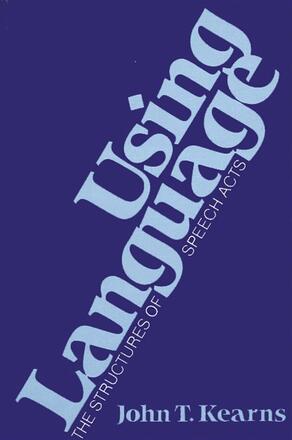
Using Language
The Structures of Speech Acts
Alternative formats available from:
Description
In a pioneer study of how language is actually used, Dr. Kearns combines the rigor of formal logic with a detailed analysis of natural language patterns. Through this double focus, he develops artificial languages that are syntactically more similar to the spoken word than first-order language itself. Numerous diagrams illustrate the evolution of these artificial languages, which represent a significant contribution to both the fields of linguistics and logic.
The book begins by delineating a theory of the structures of intentional acts and then applies this to the special case of linguistic acts. Given an understanding of the meanings of component expressions, we can use our knowledge of linguistic structure to determine the meaning of a complex expression. An innovative discussion of semantics is subdivided into theories of three "semantic dimensions": representational meaning, inferential meaning, and truth conditions. Drawing upon these analyses the speech act theory of this book purposes that the meaning of a sentence (sentential act) is to be explained wholly in terms of the meanings of component expressions (acts) and the structure of the sentence.
John T. Kearns is Professor of Philosophy at the State University of New York, Buffalo. He is the author of Deductive Logic, A Programmed Introduction and numerous articles on logic and philosophy.
Reviews
"A truly novel treatment of language. It combines the approach of action theory and the theory of speech acts with the program of more formal treatments of language that have heretofore been largely restricted to treating language as a set of inscriptions rather than as a human activity. It is a highly knowledgeable piece of work that incorporates much of what is good in recent philosophy of language. And there is much that is ingenious in this book. " — Michael A. Simon